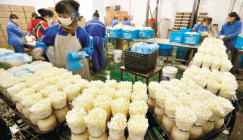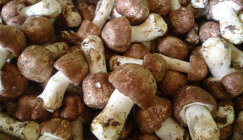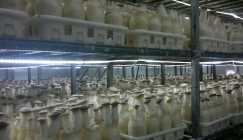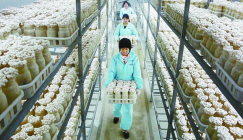In recent years, Hui County, Henan Province, China has been utilizing abundant local corncob sources to vigorously develop Oyster mushroom cultivation. At present, the county owns more than 10,000 Oyster mushroom greenhouses, the annual production quantity comes to 1 billion bags, which is also renowned as the biggest Oyster mushroom production base in the whole nation and plays the crucial role for the development of local agricultural economy. In this article, we are going to summarize some technical points on utilizing fermented corncobs to cultivate Oyster mushroom for the national colleagues’ references.
1. Cultivation facility: In Hui County, Oyster mushroom cultivation is given priority to consider archy greenhouse, situating in east and west trend and indicating the excellent result. Each greenhouse is normally built 40 meters long and 9 meters wide, the inner area is about 360 square meters. The middle of greenhouse is settled 2.3 meters high and the side wall is built 1.0 meters high. The bamboo pole is usually held as the upholder, plastic film is usually covered on top of bamboo pole which is overlaid with grass carpet. In low-temperature season, it is advisable to pull open the grass carpet so as let be pervious to light, increase the inner temperature of greenhouse and strengthen ventilation. What’s more, you could set ventilating windows on the side walls of north and south at intervals of 0.5 meters, then each greenhouse could take in more than 10,000 fungi sacks which carry with the specification of 26cm*55cm.
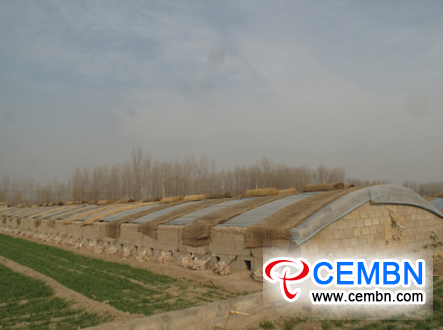
2. Cultivation season: In Hui County, Oyster mushroom cultivation is usually arranged in autumn, respectively early autumn and late autumn. In early cultivation, fermentation and bagging are commonly done at the end of August while fermentation and sack-making are generally proceeded in the early October. More specifically, in early autumn, the temperature is high, spawns grow fast and mushrooms fruit early, the output is low while holding high values and remarkable economic benefits. In late autumn, the success rate on sack-making is usually high and mushrooms are superior.
3. Compost formula: The common compost formula in Hui County: Corncob 89%, urea 2%, calcium magnesium phosphate fertilizer 4%, lime 5%, moderate amount of water.
National Mushroom Industrial Technology System has also studied on utilizing fermented corncobs to cultivate Oyster mushroom, the improved formula is: Corncob 92.5%, urea 1.5%, phosphorus diamine fertilizer 1%, lime 5%, moderate amount of water. This formula highlights its convenience on fermentation and orderliness on fruiting. Furthermore, One research also found that adding 30% of cottonseed hull is conductive to reducing pollution rate and increasing the cultivation yield.
4. Corncob disposal: Choose corncobs which are free from mould and pests. Before putting them into use, smash them into particles presenting the diameter of 0.4-1cm by the pulverizer which facilitates to obtain high efficiency and even particles.
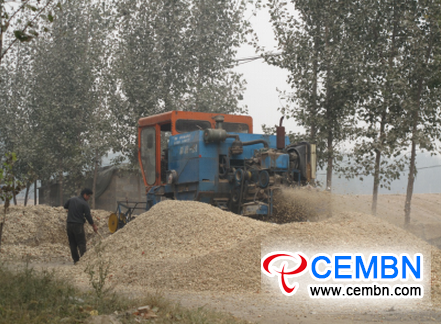
5. Compost fermentation: The fermentation quality of compost plays a decisive role on the cultivation and yield. You could follow the steps below, firstly prepare all the materials in accordance with the formula, pre-wet the corncobs till white corn disappears, then combine with auxiliary materials and mix evenly, next, build heaps and allow to ferment, the heaps could be built 0.8-1m high, the length and width could be determined by actual site conditions. For the purpose of convenient ventilation, it is feasible to get through the ventilation holes which go into the ground with a stick holding the diameter of 10cm. When you find the upper middle temperature of the heaps has risen to 65 degrees, remain for 24 hours and then turn piles. When turning piles, turn the outer materials into the middle situation and turn the middle material into the outer side, after that, open up ventilation holes and continue to let ferment. When finding the center temperature of the pile has risen to 65 degrees again, remain for 24 hours and go on turning piles repeatedly for 4-5 times. The fermentation reveals its termination firstly when you observe that the compost turns brown, then it sends out sweet fermented fragrance while it is free from ammoniacal smell, mouldy smell or any undesirable odor, meanwhile a large number of actinomycetes distribute around the ventilation holes and finally when holding up, it feels stretch and doesn’t sticky. Under that circumstance, the water content of compost is right in desirable condition when you notice a small amount of water drops on surface while it refuses to drip. After 10 days of fermentation, bagging and inoculation could be conducted when the material temperature has been cooled down to 30 degrees or so.
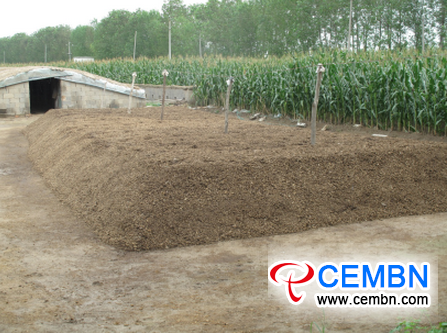
6. Bagging: Adopt polyethylene fungi sacks carrying with the common specification of 26cm*55cm*0.015cm, the research results of National Mushroom Industrial Technology System have proven that the specification of 26cm*55cm*0.015cm owns the highest biological efficiency. When adopting broken strains, the sowing quantity comes to 20%. The layer number of sowing could be flexibly adjusted by the cultivation time, after bagging, ship to the field for spawn running, then immediately use a stick holding the diameter of 2cm to drill 3 holes with 5-7cm-deep on each sides.
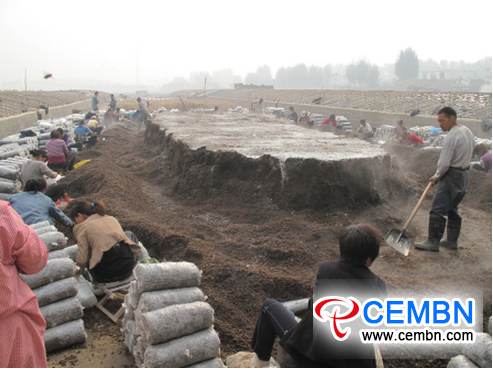
7. Spawn running: After drilling holes, determine the placing height of fungi sacks in accordance with the environmental temperature, keep the environment of spawn running clean and control the environmental temperature to a range of 25 degrees or so, then cultivate under the condition of sufficient oxygen, dark and dry. During the whole period of spawn running, be sure to strictly prevent high temperature, it is proper to turn piles in about every ten days so as to let sacks grow tidily. Provided desirable condition, spawns become fully-grown in 20 days or so. Another special stress is when you observe a mass of yellow water drops occur in the sack, then carry on fruiting management.
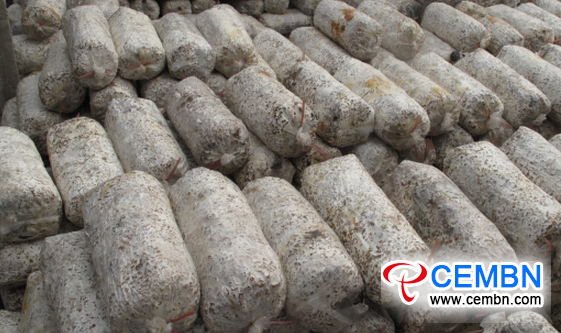
8. Fruiting: Remove the spawned sacks into fruiting room, let fruit by vertical accumulation. To begin with, place the shading net or weaving bag on the ground of mushroom house, top with fungi sacks, the overall height could be settled by environmental temperature. Heap up fungi sacks layer by layer and ascertain a height level of 4-9 layers, the length could be determined in accordance with the fruiting place. About 60cm of gaps should be left between each row of fungi sacks, also leave the aisles for picking and management. During the fruiting period, control the temperature to a range of 10-25 degrees and control the relative air humidity to a range of 90%-95%. It is particularly needful to timely ventilate, keep fresh air and let sporocarps evolve normally.
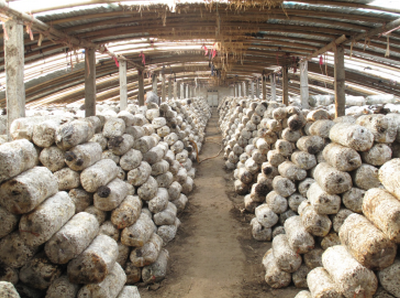
9. Picking: When noticing that the caps show flat, the stipes sink and the junction edges extend horizontally, you could timely pick them. In recent years, mushroom farmers have been bringing forward the picking time of Oyster mushroom, therefore mushrooms are in desirable appearance and resistant to transport, meaning more conduciveness to product sales and price rising.
10. After-culture mushroom management: After the termination of first flush of Oyster mushroom, guarantee water refusal and allow spawns to activate for 7 days, then conduct after-culture mushroom management.
11. The cyclic utilization of mushroom greenhouse: In Hui County, Oyster mushroom cultivation is generally finished at the end of March, after the termination of fruiting, remove the grass carpet and plastic film, clean up fungi sacks and plough so as to get ready for another cultivation season of corncob which could generate the income of hundreds of CNY. After harvesting corncobs, go on cultivating Oyster mushroom, which greatly facilitates to generate revenues for farmers, most importantly, the path efficiently improved the environment of mushroom house, lowered the occurrence rate of diseases and pests, which are jointly expected to achieve the sustainable development of Oyster mushroom cultivation.

 LATEST NEWS
LATEST NEWS






 MOST POPULAR
MOST POPULAR
